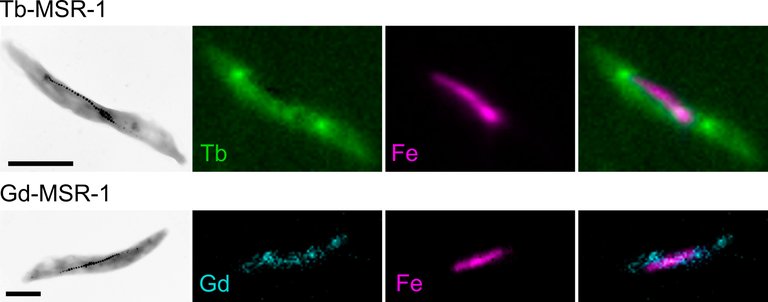They transform a bacterium for clinical diagnostics by adding metallic elements.

The bacterium Magnetospirillum gryphiswaldense is known for synthesizing magnetite crystals and acting as a compass. This feature makes it of great interest for use as a nanorrobot, since magnetic fields can lead to the area to be treated. However, it is not easy to transform and incorporate new features.
Researchers from the UPV Magnetism and Magnetic Materials Group have overcome this difficulty by adding metallic elements in the bacterial culture medium. In particular, the addition of terbium (Tb) and gadolinium (Gd) allowed the bacteria to internalize both compounds by converting them into fluorescent and double-contrast agents. This makes it suitable for clinical diagnosis.
The study, published in the journal Materials Today Bio, shows that the terbium turns the bacteria into fluorescent. This allows its use as a biomarker, as it allows to follow its footprint. On the other hand, it has been proven that with the incorporation of gadolinium it becomes a double contrast agent for magnetic resonances. Research has focused on this. In vitro tests say it is not toxic and are now working to see if it can be useful in cancer treatments.
Buletina
Bidali zure helbide elektronikoa eta jaso asteroko buletina zure sarrera-ontzian











